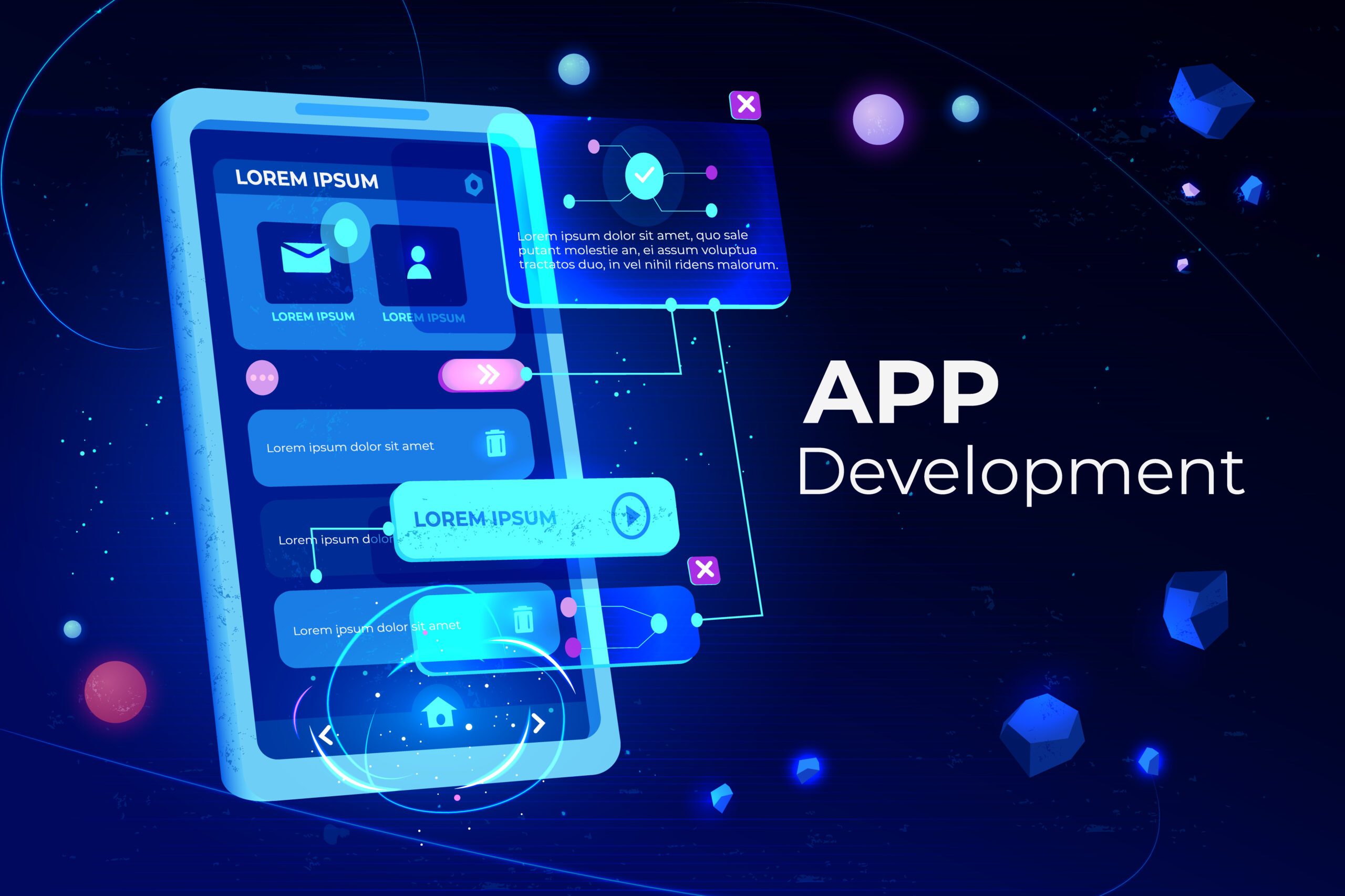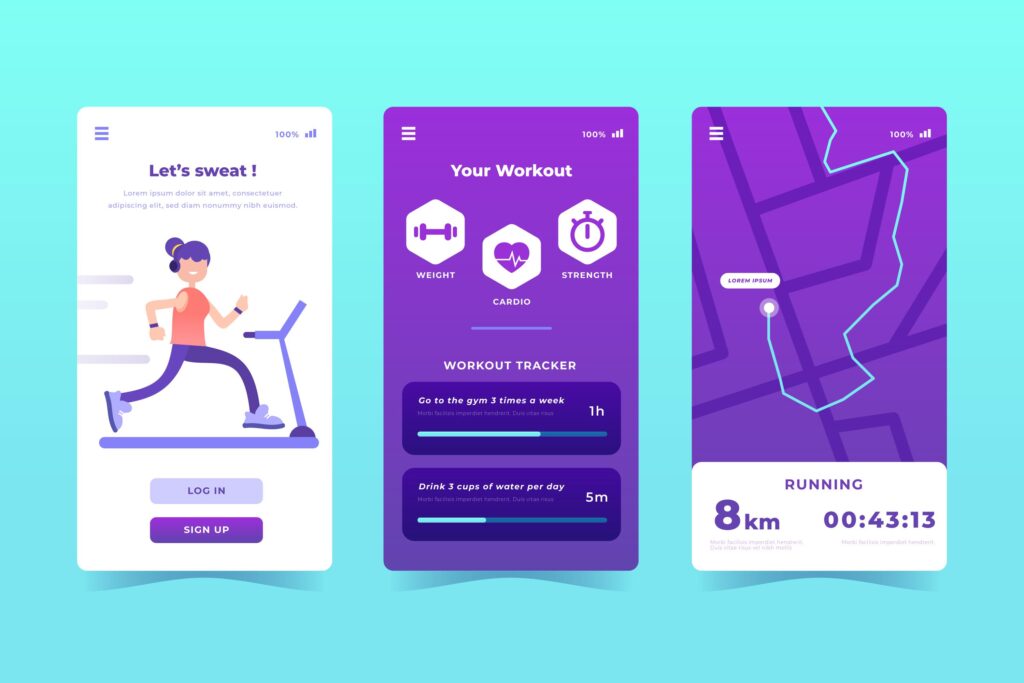Choosing the Right Framework for Your Mobile App

In today’s digital age, mobile apps have become an integral part of our daily lives. From banking and shopping to social networking and entertainment, mobile applications are essential tools that drive user engagement and business success. With the increasing demand for innovative and efficient mobile apps, developers face the crucial task of selecting the right framework to bring their ideas to life.
Choosing the right mobile app framework can significantly impact the development process, user experience, and overall success of the app. This article explores key factors to consider when selecting a framework for your mobile app, providing insights into popular options and their benefits.
Do you need to develop an app ? No problem, check our mobile app development services page.

Understanding Mobile App Frameworks
A mobile app framework is a software library that provides a fundamental structure to support the development of mobile applications. It offers a collection of pre-written code, tools, and guidelines that simplify and expedite the development process. Mobile app frameworks can be broadly categorized into three types:
- Native Frameworks: These frameworks are platform-specific and allow developers to build apps tailored to a particular operating system, such as iOS or Android. Examples include Swift for iOS and Kotlin for Android.
- Cross-Platform Frameworks: These frameworks enable developers to create apps that run on multiple operating systems with a single codebase. Popular cross-platform frameworks include React Native, Flutter, and Xamarin.
- Hybrid Frameworks: These frameworks combine elements of native and web technologies, allowing developers to build apps using web technologies like HTML, CSS, and JavaScript, which are then wrapped in a native container. Examples include Apache Cordova and Ionic.
Each type of framework has its own set of advantages and disadvantages. To choose the right framework, developers must evaluate several factors based on their specific project requirements.
Key Factors to Consider
1. Project Requirements and Goals
Before selecting a framework, it is essential to clearly define the project’s requirements and goals. Consider the following questions:
- What is the target audience for the app?
- Which platforms will the app support (iOS, Android, or both)?
- What are the app’s primary features and functionalities?
- Are there any performance or design considerations?
Understanding the project’s scope and objectives will help narrow down the framework options that best align with the app’s needs.
2. Development Speed and Time-to-Market
In today’s competitive market, the speed of development and time-to-market are critical factors. Cross-platform frameworks like React Native and Flutter allow developers to write a single codebase that works across multiple platforms, significantly reducing development time. These frameworks also offer hot-reload features, enabling developers to see changes in real-time, which accelerates the development process.
On the other hand, if the app requires platform-specific features or high performance, native frameworks might be a better choice despite their longer development cycles. Native frameworks offer direct access to platform-specific APIs and functionalities, providing superior performance and user experience.
3. Performance and User Experience
Performance is a crucial factor that can make or break a mobile app. Users expect fast, responsive, and smooth experiences, and the choice of framework plays a significant role in achieving this. Native frameworks are known for their high performance since they are optimized for their respective platforms. Apps built with native frameworks can leverage device-specific features and deliver a seamless user experience.
Cross-platform frameworks have made significant strides in performance optimization. Flutter, for example, uses a high-performance rendering engine and provides near-native performance. However, certain complex or resource-intensive applications may still benefit from the performance advantages of native frameworks.
4. Development Skills and Resources
The expertise and experience of the development team are crucial considerations when choosing a framework. If the team has extensive experience with a particular technology, leveraging that expertise can lead to more efficient and effective development. For instance, if the team is proficient in JavaScript, opting for React Native or Ionic might be a natural choice.
For teams with diverse skill sets, cross-platform frameworks can be advantageous as they allow developers to work on a single codebase, reducing the need for specialized platform-specific knowledge. Additionally, the availability of development resources, such as documentation, libraries, and community support, should be considered when evaluating frameworks.
5. Budget and Cost Efficiency
Budget constraints often influence the choice of framework. Cross-platform frameworks are generally more cost-effective as they enable the development of apps for multiple platforms using a single codebase. This approach reduces development hours and maintenance costs. However, it is important to weigh the initial cost savings against potential trade-offs in performance and user experience.
Native frameworks may incur higher development costs due to the need for separate codebases and specialized development skills. However, for apps requiring intricate functionalities and optimal performance, the investment in native development can yield long-term benefits.
6. Community and Ecosystem
The strength of the framework’s community and ecosystem is another critical factor. A vibrant and active community can provide valuable support, resources, and third-party integrations, which can streamline the development process and resolve issues more efficiently. Frameworks with extensive ecosystems offer a wide range of plugins, libraries, and tools that can enhance the app’s capabilities.
React Native, for example, has a large and active community, offering numerous libraries and third-party integrations. Similarly, Flutter’s growing community provides comprehensive documentation and support, making it easier for developers to find solutions and share knowledge.
7. Future Scalability and Maintenance
When choosing a framework, it is important to consider the app’s future scalability and maintenance requirements. Cross-platform frameworks simplify maintenance by allowing updates and changes to be applied across multiple platforms simultaneously. This approach can save time and effort in the long run.
Native frameworks, while requiring separate updates for each platform, offer greater control over platform-specific updates and improvements. This can be advantageous for apps that anticipate frequent updates or require platform-specific enhancements.
Popular Mobile App Frameworks
1. React Native
React Native, developed by Facebook, is one of the most popular cross-platform frameworks. It uses JavaScript and allows developers to build natively rendered mobile apps for iOS and Android. React Native offers a robust set of pre-built components, hot-reload functionality, and a large community, making it an excellent choice for rapid development.
Advantages:
- Single codebase for iOS and Android
- Strong community support
- Hot-reload for faster development
- Extensive library of third-party plugins
Disadvantages:
- May require native code for complex functionalities
- Performance may not match native apps in certain scenarios
2. Flutter
Flutter, developed by Google, is another powerful cross-platform framework that has gained significant traction. It uses the Dart programming language and provides a rich set of pre-designed widgets for creating visually appealing and high-performance apps. Flutter’s unique approach to rendering UI directly on the canvas allows for smooth animations and excellent performance.
Advantages:
- High-performance rendering engine
- Beautiful and customizable UI components
- Single codebase for iOS and Android
- Strong support from Google and a growing community
Disadvantages:
- Relatively new, with a smaller ecosystem compared to React Native
- Learning curve for developers new to Dart
3. Xamarin
Xamarin, owned by Microsoft, is a mature cross-platform framework that allows developers to build apps using C#. Xamarin provides a comprehensive set of tools and libraries, enabling code sharing across iOS, Android, and Windows platforms. It also offers native performance and access to platform-specific APIs.
Advantages:
- Single codebase for multiple platforms
- Native performance and UI
- Strong integration with Microsoft tools and services
- Access to platform-specific APIs
Disadvantages:
- Larger app size compared to native apps
- Steeper learning curve for developers new to C# and .NET
4. Ionic
Ionic is a popular hybrid framework that leverages web technologies like HTML, CSS, and JavaScript to build mobile apps. It uses Apache Cordova to provide a native container for the web code, allowing it to run on iOS and Android devices. Ionic is known for its simplicity and ease of use, making it a great choice for rapid prototyping and smaller projects.
Advantages:
- Easy to learn and use
- Extensive library of UI components
- Quick development and prototyping
- Wide range of plugins and integrations
Disadvantages:
- Performance may not match native apps
- Limited access to platform-specific features
5. Swift and Kotlin (Native Frameworks)
For developers looking to build platform-specific apps, Swift (for iOS) and Kotlin (for Android) are the go-to choices. These native frameworks offer direct access to platform-specific APIs and deliver the highest performance and user experience. While they require separate codebases for each platform, they provide unparalleled control and customization.
Advantages:
- Optimal performance and user experience
- Full access to platform-specific features and APIs
- Better integration with platform-specific tools and services
Disadvantages:
- Longer development cycles
- Higher development and maintenance costs
Conclusion
Choosing the right framework for your mobile app is a critical decision that can significantly impact the development process, user experience, and overall success of the app. By carefully considering factors such as project requirements, development speed, performance, team skills, budget, community support, and future scalability, developers can make an informed choice that aligns with their goals and constraints.
Whether opting for a cross-platform framework like React Native, Flutter, or Xamarin, or choosing native development with Swift or Kotlin, the key is to prioritize the app’s unique needs and leverage the strengths of the chosen framework to deliver a high-quality and engaging mobile experience. By doing so, developers can create mobile apps that stand out in today’s competitive market and drive long-term success for their businesses.
